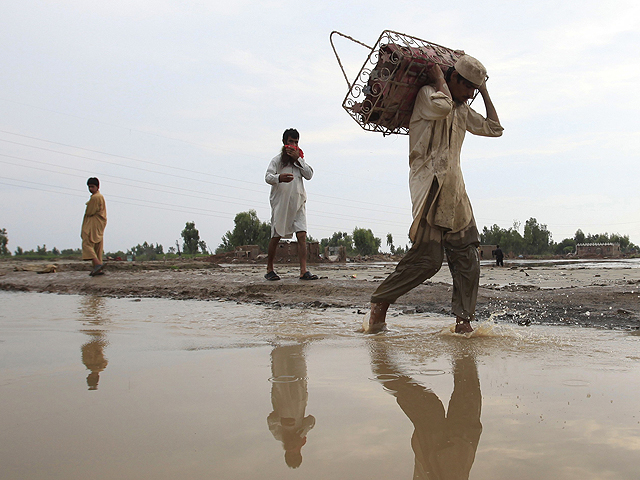
Zafar Ilyani is a man aggrieved. The raging waters have taken a lot from him, dampening his life in more ways than one.
In 2010, the floods claimed his brother; in 2012, his father.
This year, too, the damage is extensive. And yet, there has been no help.
“This is the fourth consecutive year that my house has been swept away,” says an angry Zafar. “Despite the government’s tall claims, the authorities in Punjab have failed to compensate around 70,000 people affected by the floods in the 12 union councils of Layyah district. Winter is coming, and we are penniless.”
Where are the saviors?
It has been three years since the floods devastated two dozen union councils in this underdeveloped southern district situated on the banks of River Indus. These union councils, encircled by the river, are located about 30 to 40 kilometres away from Layyah city at the confluence of Bhakkar, Rajanpur and Dera Ghazi Khan districts and also close to Dera Ismail Khan.
Today, thousands of families from here are still crying out for attention and help.
“No financial assistance has been given to me or to anyone in Ilyani village,” says Zafar as he stands on the roof of a collapsed home. “Just the past week’s flash flooding has uprooted some 5,000 families, their crops and their cattle. 10,000 were uprooted last year. Since 2010, more than 70,000 people have been uprooted.”

A survey conducted by The Express Tribune last week reveals that recent flooding in River Indus has washed away various crops cultivated on thousands of acres of agricultural lands. Furthermore, the local populations of five union councils have been forced to migrate to safe places. Ghulam Haider Thind, the former MNA and the district nazim of Layyah, blames the government for not checking on the natural canals directly linked to River Indus.
“The Khadi Creek has destroyed around 1,200 acres of crops worth millions of rupees. More than 100 families have been displaced since 2010,” explains Thind.
Chaudhry Ejaz, the executive engineer of the district, agrees. He adds that a regulator on Khadi Creek’s opening point is essential to protect three cities – Layyah, Kot Sultan and Kot Addu.
Half-hearted measures?
According to Shahid Khan Advocate, a candidate for the district council, around 10,000 ‘watan’ cards were issued to people who live in areas falling under these union councils.
“The majority of the people have yet to receive the promised amount of Rs100, 000,” he says.
However, two lawmakers from the area—MNAs Saqlain Shah from NA-182 and Faizul Hassan from NA-181 – claim that they are constantly in touch with district administration to monitor relief activities in their constituencies. Both MNAs were also in Islamabad to attend the National Assembly session.
A deplorable state
The condition of approximately 120 primary, middle and high schools is terrible right now. Students are unable to enter classrooms as the walls are at risk of crumbling at any given moment.
“More than 20,000 students are out of school,” says a teacher Aslam Joya, a teacher in the government primary school Sakhani Wala.
Whispers of terror
Because of the dire situation of these regions, some banned outfits, have entered the scene to assist poor farmers. Today, locals are worried about terrorism by the Punjabi Taliban because of the area’s proximity to Dera Ismail Khan and the tribal belt.
“We wrote to the district administration about this,” reveals Shahid Advocate. “Yet, there has been no response. The government’s apathy is the prime reason for the spread of extremism in this area.”
Published in The Express Tribune, August 26th, 2013.


1729662874-0/One-Direction-(1)1729662874-0-165x106.webp)






1726722687-0/Express-Tribune-Web-(9)1726722687-0-270x192.webp)
1732103737-0/Copy-of-Untitled-(55)1732103737-0-270x192.webp)






COMMENTS
Comments are moderated and generally will be posted if they are on-topic and not abusive.
For more information, please see our Comments FAQ